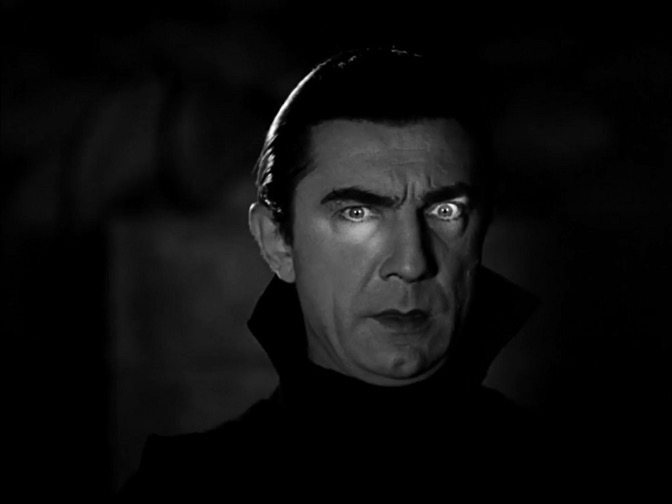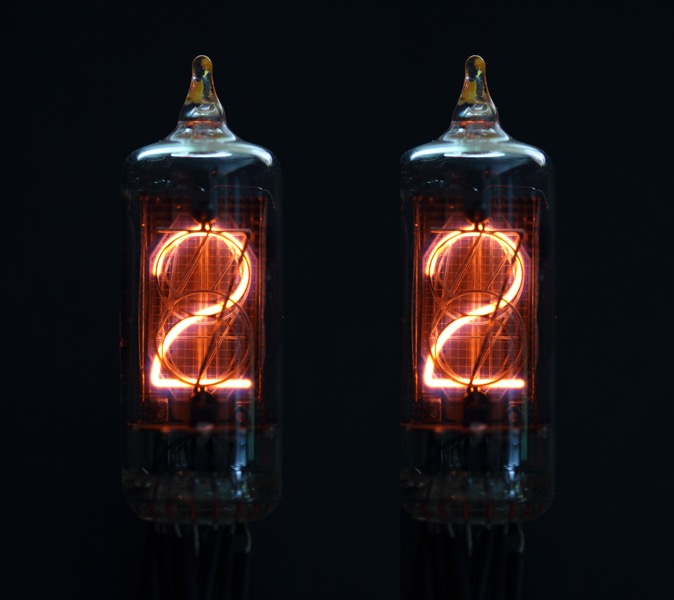Apr 15, 2025 04:26 PM Filed in:
History | Did You Know?
You know the sound. It's a plaintive wailing from afar, reminiscent of the air raid sirens of WWII. With it comes an adrenaline rush and instant anxiety. It's a warning to take cover as a dangerous storm approaches. You probably never give these warning systems a second thought – until you hear one.
Read More...Tags: Tornado, Siren, Alert, Alarm
Dec 03, 2024 05:48 PM Filed in:
Histoy | Did You Know?
Probably the most famous radio in TV Land was the 8th castaway.
Read More...Tags: Radio, TV, Television
Aug 26, 2024 05:47 PM Filed in:
Did You Know?
From the basic stethoscope to controlling brain waves, sound and medicine have been working together since caveman days.
Read More...Tags: medicine, doctor, stethoscope
Dec 18, 2023 03:17 PM Filed in:
Did You Know? | How Things Work | How-to | History
Well I've done it. I said that someday I would write a book, and I have. I now know how rocky the road is for authors. Writing this book has to be the single most difficult thing I've done in my professional life. Producing a documentary comes a close second. At least in that, other people were saying the words. When writing a book, one must come up with all the words by yourself.
Read More...Oct 27, 2023 01:27 PM Filed in:
news | Did You Know? | nostalgia There are sounds unique to both the hit show M*A*S*H and a real MASH unit during the Korean War. Read More...
There are sounds unique to both the hit show M*A*S*H and a real MASH unit during the Korean War. Read More...Jun 12, 2023 10:15 AM Filed in:
History | Did You Know?
I'm a self-professed nerd and "Trekkie" so it's hard to contain my excitement with the current resurgence of Star Trek in our living rooms. My earliest memories of Star Trek are from the last season of the original series (that's TOS for you non-Star Trek nerds). During that slow march to the gallows, dimwitted network muckity-mucks sentenced Star Trek to their weakest time slot: Friday nights at 10 PM. The resulting low ratings provided the perfect excuse to torpedo the show they hated and misunderstood. But for a 7 year old who had seen 2001: A Space Odyssey and was witnessing the race to the moon, the move to Friday night was the opportunity to finally watch the show all the other nerds at school were talking about. It was a hard sell to convince my parents to let me stay up that late, but my science fiction loving Mom tipped the scales in my favor.
Read More...Tags: History, Star Trek, Gene Roddenberry, SFX, 2001: A Space Odyssey
Apr 27, 2023 01:54 PM Filed in:
Did You Know?
Think your hearing is good? That notion is destroyed when you find out about all of the other sounds you don't hear.
Read More...Tags: sound wave, infrasound, Ultrasound, Animals
Mar 29, 2023 10:12 AM Filed in:
Did You Know? | How Things Work | History
Reimagining performances in centuries-old spaces.
Read More...Tags: History, acoustics, Reverb, baroque, Recording
Jan 24, 2023 03:44 PM Filed in:
Did You Know? | How Things WorkNov 30, 2022 04:21 PM Filed in:
Did You Know? | History
Arthur Haddy may not a household name, but his achievements are. Haddy is considered by many to be the "father of hi-fi." He may single-handedly be responsible for some of the greatest consumer audio advancements of the late 20th century: High-fidelity recordings, Stereo LPs, and Cassette Dolby noise reduction.
Read More...Tags: LP, Record, Recording, History, Cassette, dolby, Noise reduction
Oct 31, 2022 10:53 AM Filed in:
Did You Know? | How Things Work
During the American Revolution, patriot spies sent secret coded messages to each other through several means: newspaper advertisements, invisible ink or code words buried within innocent-looking letters, and even carefully arranged laundry on a clothes line. These messages that are in plain sight, but undetectable to the causal observer, are often mistakenly called subliminal messages. But they are in fact supraliminal messages - hidden in plain sight and detectable if one knows where to look.
Read More...Tags: subliminal, supraliminal, Secret messages, Backmasking, The Beatles, Led Zepelin
Sep 27, 2022 11:56 AM Filed in:
History
The Golden Age for horror films was the 1930s, and not coincidentally when movies with sound began.
Read More...Tags: Vampire, Horror, Dracula, Bela Lugosi, Frankenstein, Silent film, Talkies, mummy, Creepy
Aug 01, 2022 11:44 AM Filed in:
History
The world of radio "idents"
Read More...May 20, 2022 05:43 PM Filed in:
Did You Know? | History
As terrible as war is, it often brings scientific discoveries to the masses in peacetime. One such discovery from World War II is the Sound Fixing and Ranging channel, or SOFAR channel for short. It's not a TV channel, but an ocean channel. In 1944, geophysicist Maurice Ewing discovered a hidden horizontal oceanic layer about 1,000 meters (3,300 feet) deep under the ocean's surface. It's sandwiched between warm, less salty and lighter upper waters, and cooler, more salty denser lower waters. What's unique about this layer is its ability to trap sound waves and channel them over vast distances.
Read More...Apr 18, 2022 07:03 PM Filed in:
History | Did You Know? If we look back over the last 140 years of sound recording, it seems that formats come and formats...come back. I've written many times in these newsletters about nearly dead technologies that seemingly get resurrected out of nowhere, such as the vinyl record, the cassette, and AM radio. The younger generations are partly responsible for breathing new life into these old formats, but most stand on their own merits. Read More...
If we look back over the last 140 years of sound recording, it seems that formats come and formats...come back. I've written many times in these newsletters about nearly dead technologies that seemingly get resurrected out of nowhere, such as the vinyl record, the cassette, and AM radio. The younger generations are partly responsible for breathing new life into these old formats, but most stand on their own merits. Read More...Tags: Wax cylinder, Record, LP, Cassette, Vintage, Phonograph
Mar 08, 2022 11:25 AM Filed in:
Did You Know?FarmToday's farm is not at all like your grandfather's farm. It's a high-stakes business for farmers who expect high-yields. And what's driving up those yields? Technology. Since the Newcomen steam engine of the late 1700s, the agriculture industry has been progressively adopting new technology and science to feed the world. And now high-tech farming is getting even more high-tech. Farmers are using exciting new sound technologies and practices to coax more out of their crops, keep their livestock happy, and keep themselves safe.
Read More...Tags: Farm, Agriculture, Farming, Livestock, SmartHome, ioT
Jan 21, 2022 05:40 PM Filed in:
History | Did You Know?
PART I
The year '22 ushers in an exciting new technology. Here's what has been said about it:
"The newspaper that comes through your walls."
"Anyone with common sense can readily grasp the elementary principles and begin receiving at once."
"It will become as necessary as transportation. It will be communication personalized. There will be no limit to its use."
Read More...Tags: Radio
Dec 17, 2021 04:35 PM Filed in:
Did You Know? | History
"Ding-dong, ding-dong
Ding-dong, ding-dong
Hark how the bells
Sweet silver bells
All seem to say
Throw cares away"
Peter Wilhousky / Mykola Leontovich
This time of year can be joyous, especially for holiday music lovers. Christmas tunes flow out of stores and TV sets, and holiday concerts fill December's weekends. But one carol, "Carol of the Bells," may be based on a centuries-old doom and gloom song.
Read More...Tags: music, Christmas, Bells, Ukraine, Peter J. Wilhousky, mykola Leontovych, Kiev, NBC, Dies irae, dorian mode, Carol, John Williams
Sep 29, 2021 10:21 AM Filed in:
How Things Work | Did You Know?
Captain of the 'Weser': What's it like down there, in a submarine?
Der Leitende: It's... quiet.”
Das Boot, 1981
Submarines need to be stealthy...and quiet. New technology like acoustic cloaking is on the horizon.
Read More...Tags: submarines, Navy, sonar, Warfare, stealth, Ocean, Cloaking
Sep 13, 2021 11:15 AM Filed in:
History | How Things Work | Did You Know?
Mickey Mouse: Mr. Stokowski. Mr. Stokowski! Ha! My congratulations, sir.
Leopold Stokowski: Congratulations to you, Mickey.
Mickey Mouse: Gee, thanks. Well, so long. I'll be seein' ya!
Leopold Stokowski: Goodbye.
In 1940, before the world would be plunged into a half decade of devastating conflict, a larger-than-life cartoon creator teamed up with a wild-haired orchestra conductor and unleashed a fantastical film that would forever change the way we experience movies. The morning after the gala event at the Broadway Theater in New York City, The New York Times critic Bosley Crowther said, "The music comes not simply from the screen, but from everywhere; it is as if a hearer were in the midst of the music." Even with all the wondrous characters, vivid animation, and whimsical storytelling of this new film, it was the sound that stole the show.
Read More...Tags: Disney, surround sound, Fantasound, Cinema


















